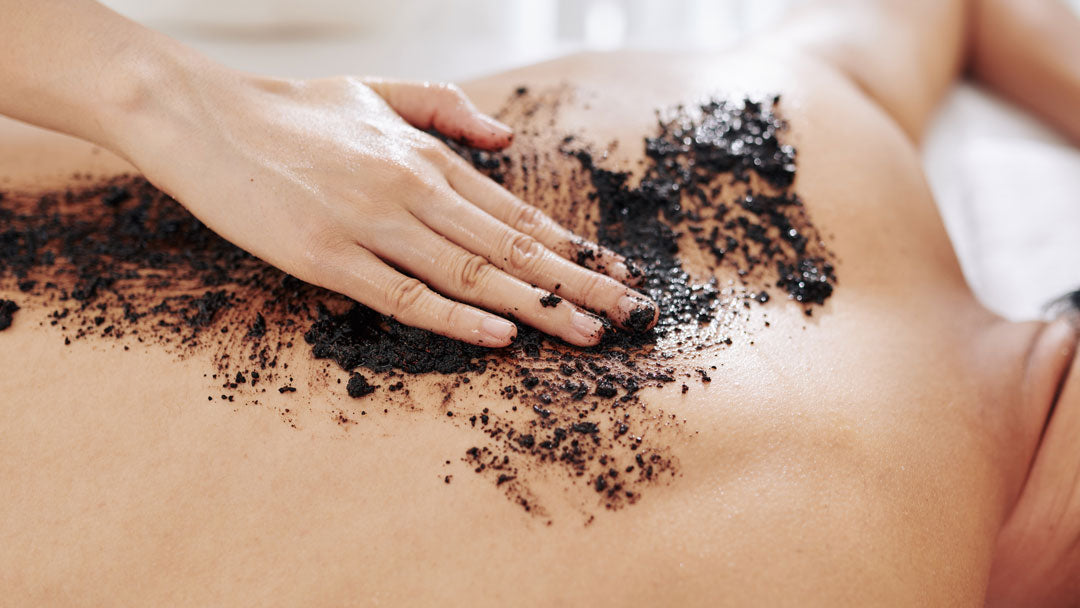FREE: NEW Pigmentation Oil 1.5mL Sample with every order.
The 1 Skincare Practice You Need to Do Weekly For Glowing Skin

If you’re not already exfoliating weekly – it’s the one practice you need to start including in your skincare routine!
What is exfoliation?
Exfoliation is the process of removing dead skin cells from the outermost layer of the skin. This can be done through physical or chemical means.
Why is exfoliating important?
Exfoliating the skin has a number of benefits, including:
- Removing dead skin cells: Exfoliation helps to remove dead skin cells from the surface of the skin, which can improve the skin's texture and make it look smoother and brighter.
- Improving skin tone and clarity: Exfoliating can help to even out skin tone by removing dark spots, hyperpigmentation, and other discolorations.
- Unclogging pores: Exfoliation can help to unclog pores, which can reduce the likelihood of breakouts and blackheads.
- Increasing product absorption: By removing dead skin cells, exfoliation can help to improve the absorption of skincare products like serums and moisturizers.
- Stimulating cell turnover: Exfoliation can help to stimulate cell turnover, which can improve the overall health and appearance of the skin.
- Fighting signs of aging: Regular exfoliation can help to reduce the appearance of fine lines and wrinkles, as well as other signs of aging.
Are there different types of exfoliation?
Physical Exfoliation
Physical exfoliation involves using a scrub, brush, or tool to physically remove the dead skin cells. This can help to improve skin texture and reduce the appearance of fine lines, wrinkles, and blemishes.Mixed with our Australian Jojoba, our Jojoba Bean Natural Exfoliant turns into an exfoliating polish fit for both body and facial exfoliation.
Did you know?
Made from finely milled Jojoba beans, and mixed with the liquid inside the Jojoba bean (the Jojoba itself), these two complete the lifecycle of our Jojoba bean, becoming a zero-waste duo!
Clinically proven to provide the skin with up to 8 hours of moisturisation, our Australian Jojoba will not only help you create an exfoliating polish when mixed with the Jojoba Bean Natural Exfoliant, but it will leave skin smooth and soft - long after you wash it off!
Chemical Exfoliation

Chemical exfoliation involves using chemicals such as alpha-hydroxy acids (AHAs) or beta-hydroxy acids (BHAs) to dissolve the bonds between dead skin cells, allowing them to be easily removed from the skin. Chemical exfoliation can be gentler than physical exfoliation and is often used in skincare products like toners, serums, and masks.
Our Jojoba & Enzyme Radiance Mask is a non-abrasive, exfoliating mask that uses plant-powered AHAs and BHA to deeply clean and purify the skin, while gently dissolving dead skin cells to reveal a revitalised, smooth complexion.
Did you know?
This AHA/BHA face mask has been clinically proven to provide the following results:
- More efficacious than common synthetic AHAs in skin renewal vs irritation*
- Speeds up skin cell renewal rate to 16 days**
*Results based on a measure of ACB™ Fruit Mix vs. synthetic Glycolic and Lactic Acid using the Therapeutic Index.
**Results based on in-vivo tests on ACB™ Fruit Mix
How often should I exfoliate?
The frequency of exfoliation depends on your skin type and the exfoliation method you're using. Here are some general guidelines to follow:
For Sensitive Skin
Exfoliate once a week or every other week with a gentle exfoliant.
For Normal Skin
Exfoliate once or twice a week with a physical or chemical exfoliant.
For Oily/Blemish Prone Skin
Exfoliate two to three times a week with a physical or chemical exfoliant.
For Dry or Mature Skin
Exfoliate once a week with a gentle exfoliant, and avoid using harsh physical exfoliants that can irritate the skin.
It's important to listen to your skin and adjust your exfoliation frequency as needed. Over-exfoliating can lead to irritation, dryness, and sensitivity, so it's best to start with a less frequent routine and gradually increase as tolerated.








